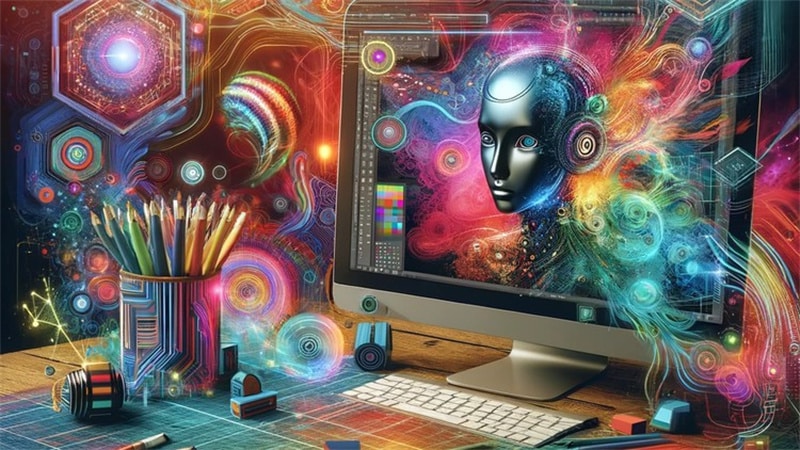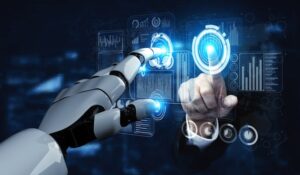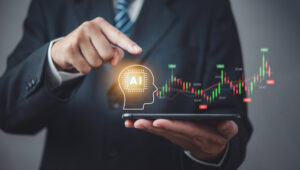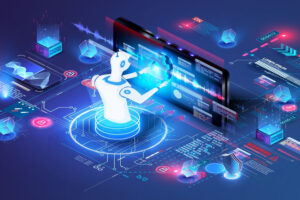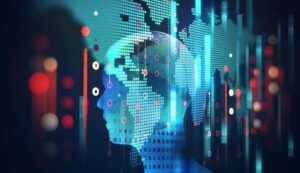In today’s digital world, the way we approach design is rapidly evolving. One of the most exciting developments is how AI creates unique designs. This technology is changing the landscape of creativity, offering new opportunities and challenges for digital creators. But how exactly does AI manage to craft such distinct and innovative designs?

Understanding AI’s Role in Design
Artificial Intelligence, or AI, is a powerful tool that simulates human-like intelligence to perform tasks. In design, AI analyzes vast amounts of data to generate unique concepts and ideas. By processing this data, AI can create designs that are not only original but also tailored to specific needs.
The Mechanism Behind AI Design
At its core, AI uses algorithms and machine learning to understand design elements. By learning from existing designs, AI can predict trends and create something new. This is crucial in producing designs that are both unique and relevant in today’s fast-paced market.
Benefits of AI in Design
Efficiency and Speed
One of the biggest advantages of AI is its ability to work quickly. AI can process and analyze data at a speed that humans simply can’t match, enabling designers to focus on creativity and strategy.
Customization and Personalization
AI allows for highly customizable designs. By analyzing user preferences and behaviors, AI can create personalized designs that cater to individual tastes, enhancing user experience.
Innovation and Creativity
AI pushes the boundaries of creativity by offering new perspectives and ideas that designers might not have considered. This leads to more innovative and unique designs that stand out.
Real-World Applications of AI in Design
Graphic Design
In graphic design, AI tools help create logos, layouts, and more by analyzing design trends and user preferences. Platforms like Fotor offer AI-powered design solutions that make the process more efficient.
Interior Design
AI applications in interior design can suggest color schemes, furniture layouts, and even predict future trends, making the design process more streamlined and effective.
Fashion Design
AI is revolutionizing fashion by predicting trends and creating unique clothing designs that appeal to modern consumers. This innovation is crucial in an industry that thrives on creativity and originality.
Challenges and Considerations
Ethical Concerns
As with any technology, there are ethical concerns surrounding AI in design. Issues such as data privacy and the potential for bias in AI algorithms must be addressed to ensure ethical use.
Human Touch
While AI can create, it lacks the emotional depth and intuition of a human designer. It’s important to strike a balance between AI-generated designs and human creativity.
The Future of AI in Design
The future of AI in design is bright, with endless possibilities for innovation. As AI technology continues to evolve, it will become an even more integral part of the design process.
AI and Human Collaboration
Instead of replacing human designers, AI will enhance their capabilities, allowing for more efficient and creative design processes.
Continuous Learning and Improvement
AI systems will continue to learn and improve, becoming more sophisticated and capable of producing even more unique and innovative designs.
Conclusion
In conclusion, the role of AI in creating unique designs is transformative. By embracing this technology, digital creators can unlock new levels of creativity and efficiency. As we move forward, the collaboration between AI and human designers will continue to shape the future of design.

FAQs
How does AI learn design trends?
AI learns design trends by analyzing large datasets of existing designs, identifying patterns, and predicting future trends based on this data.
Can AI replace human designers?
No, AI is not meant to replace human designers. Instead, it serves as a tool to enhance their creative process and improve efficiency.
What are the ethical considerations of using AI in design?
Ethical considerations include data privacy, potential bias in AI algorithms, and ensuring that AI use adheres to ethical standards and practices.

